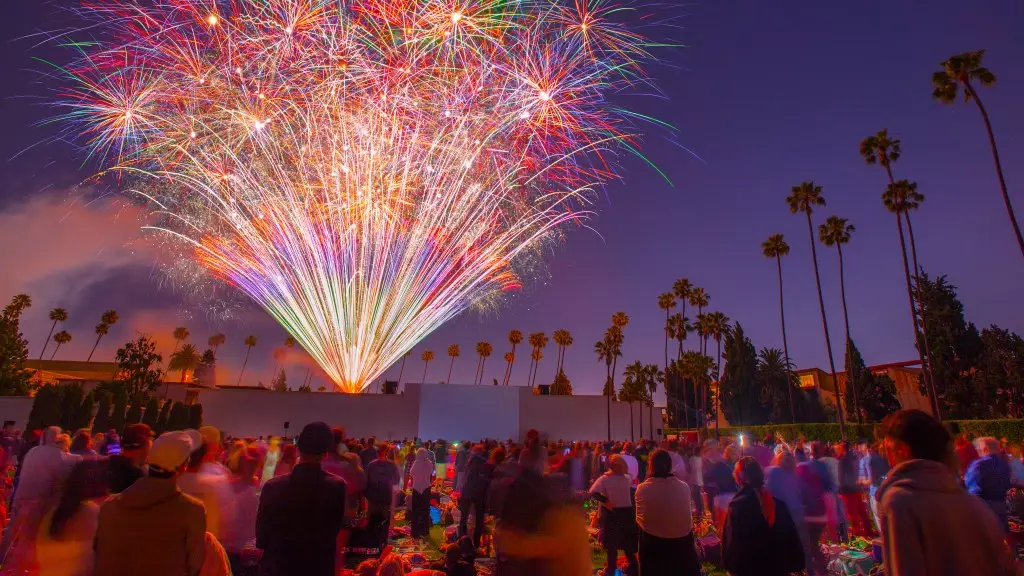As the sweltering summer sun casts its glow over Los Angeles, the city is caught in a maelstrom of overwhelming emotions—clashes between communities, the ashes of recent wildfires lingering in the air, and the ever-looming specter of civil unrest. Yet amidst this chaotic backdrop, a beacon of vibrancy shines at the Hollywood Forever Cemetery, where Cinespia finds its footing in a uniquely festive experience. Celebrating its decade-long journey under the guidance of creative director Navid Sinaki, Cinespia has blossomed into a cultural phenomenon that transcends mere entertainment. Sinaki articulated his vision, noting that it’s not escapism that defines the Cinespia experience; rather, it’s about the transformative power of communal engagement in a space steeped in history and remembrance.
Sinaki describes the cemetery as his “happy place,” a sentiment that might seem paradoxical at first. However, therein lies the beauty of the Cinespia event—transforming a location often associated with mourning into a venue for celebration. People come together, united by laughter and shared cinematic experiences, even when the city outside the cemetery’s walls echoes with protests and political strife. Sinaki’s insistence that the cemetery serves as both a playground and sanctuary underscores a deeply worthwhile pursuit: that even in the darkest of times, human connection and creativity can thrive.
A Community Anchor Amidst Chaos
At a time when societal tensions are unbearably high, it’s refreshing to witness events such as Cinespia offering an opportunity for Angelenos to reconnect with one another. Despite a volatile cultural landscape, Sinaki asserts that gatherings in Hollywood Forever foster a profound sense of community. His words underline an important observation—the strength of collective spirit often shines brightest when faced with adversity. Protests urging for justice intermix with celebrations of life through film, creating a unique tapestry of human experience.
However, one must also consider whether such escapism, as engaging as it may be, runs the risk of trivializing the very issues that engulf the city of Los Angeles. Sinaki acknowledges the delicate balance he must navigate while programming films that attract thousands, as he weighs the emotional resonance of each screening against community realities. It’s a “revelatory responsibility,” as he aptly put it—one could argue that choosing a particular film could either uplift or obscure the societal conversations at hand.
The Films that Reflect Our Times
Upcoming screenings, such as the anticipated showing of Paul Verhoeven’s notorious “Showgirls,” encapsulate this notion; the selection might be perceived merely as part of a revelry, but its underlying themes can be interpreted as reflective of women’s rights, societal expectations, and the unyielding pursuit of the American Dream. Sinaki’s task is far more than just coordinating evening outings; he must be sensitive to the underlying narratives that resonate with attendees under current circumstances.
Moreover, the extravagant plans such as a “heavenly Caesars-esque” photo booth reveal an important juxtaposition in today’s Los Angeles: the insistence on making light of heavy subjects. Such creative expressions enable attendees to engage with deeper themes while still enjoying the moment—encouraging a kind of reflection that isn’t marred by negativity. It’s a nuanced form of resistance against despair, a way of asserting that joy can coexist with struggle.
The Complex Reality of Political Unrest
Yet while Sinaki and Cinespia strive to provide an invaluable service to the community, one cannot ignore the turmoil that has spilled over into the streets of Los Angeles. The recent influx of National Guard troops and the heavy-hand of law enforcement in response to protests against ICE raids emanate an unsettling energy that looms overhead. The clashing narratives of resistance and authority expose the fragility of freedoms that many take for granted, raising the question of how much longer the joyous gatherings at Hollywood Forever can remain unscathed by the realities outside its gates.
The tension between community celebration and political unrest raises difficult questions around privilege and representation in Los Angeles. The city’s natural vibrancy is often undermined by the divergent struggles faced by different demographics. When considering cinematic experiences like Cinespia, we must ask ourselves: whom are we celebrating, and at what cost? As we rally together for entertainment, are we covering up the very issues that demand our attention and action?
In the heart of a city struggling to find peace, Hollywood Forever stands as a juxtaposition—a place where people can gather and bond over shared experiences. However, as the summer heats up and events unfold outside the cemetery’s walls, it is essential to remain aware of the conversations that count. Cinespia’s gatherings are an important reminder that, even amidst chaos, there is beauty in resilience—a lesson we must carry forward as we navigate these tumultuous times.


Leave a Reply